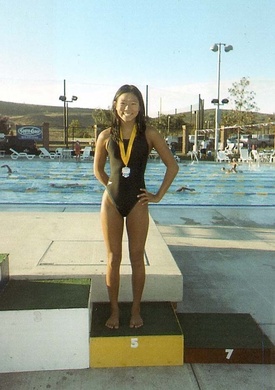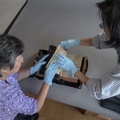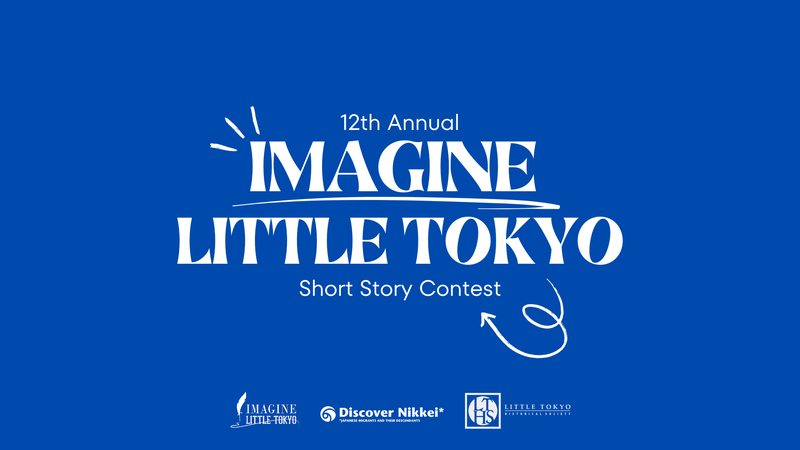
I joined a swim team in Southern California when I was 8 years old and before I knew it, swimming became the biggest part of my identity. If I wasn’t at school, I was in the pool. My weekends were reserved for swim meets from the early mornings to evenings. My conversations were always swimming-related because my friends were mainly swimmers. I gained nicknames from my teammates, and even schoolmates, such as “the Olympic swimmer” and “Kato” (I am actually called Kato more often than my real name). While I excelled in both school and swimming, I always favored the latter. All of the toughest lessons and most memorable experiences I have gained were through swimming. Simply put, swimming was life and I could not have become the person I am today without it.
Nor could I have had the privilege of growing up as an athlete in an inclusive environment had it not been for the very first Nikkeis in swimming. Japanese American swimmer Takashi Hirose comes to mind.
Born and raised in Hawaii, Hirose was part of the “Three-Year Swim Club,” which was coached by Soichi Sakamoto. Coach Sakamoto had the commitment, faith, and patience to bring the best out of young swimmers in a sport that was new and unexplored to the Nikkei group. Based in a low-income community, he had to make do with his resources. He implemented unique techniques such as training in the irrigation ditches of Hawaii plantations, which proved to be very effective. He would train his swimmers in these irrigation ditches so they could gain greater endurance and strength from swimming against oncoming currents, compared to their competitors who swam in traditional swimming pools.
With a dedicated coach and a strong mindset, Takashi Hirose quickly became an international swim legend. At just 15 years old, he competed in the US Nationals and became known as the first AJA (American Japanese Asian) to compete for the US team. He also qualified for the 1940 Olympics in Tokyo, but was met with an unfortunate turn of events. The 1940 Olympics was cancelled due to rising tensions between countries, which eventually led to WWII and the internment of Japanese Americans.
As a young Japanese American in America with not many options for survival, Hirose joined the US army and fought in the 442nd Regimental Combat Team. Once WWII ended, Hirose was lucky enough to continue his swimming career at Ohio State University, earning respectable NCAA and Big Ten titles.
Unfortunately, he was unable to compete in the 1948 Olympics because the severe bodily damages he suffered from WWII resurfaced and limited his performance in the water. There is no doubt that Hirose was wrongly stripped of so many opportunities in his promising swimming career, but he never let his love for the sport fade. He continued to inspire many people through his role as a swim coach based in Hawaii, and was even recognized in the International Swimming Hall of Fame in 2017. Though he passed away in 2002, this recent acknowledgement proves that his legacy and inspiration still lives on in the world of swimming today.
Along with inspirational Nikkei swimmer Takashi Hirose are Japanese American swimmer Ford Konno and Japanese Brazilian swimmer Tetsuo Okamoto. In 1952, Konno became the first swimmer of Japanese descent to win a gold medal in the Olympics. He took home the gold medal in the 1,500-meter freestyle individual event and the 800-meter freestyle relay. Meanwhile in that same 1,500-meter event, Okamoto followed closely and took home the bronze medal.
To be honest, I did not realize how huge of an impact Nikkeis have made in swimming because I never heard much about them in the Olympics or in my swimming division while growing up. Little did I know, swimming was yet another sport that past Nikkeis have made inclusive and enjoyable for future Nikkei swimmers like me.
Today, Nikkei athletes are prevalent in a spectrum of sports and represent many different countries around the world. For example, Japanese Haitian tennis player Naomi Osaka, who represents Japan, but lives in America. Whether they are dominating in the pool or on the tennis court, Nikkei athletes are figures of inspiration and solidarity for all aspiring and existing athletes around the world. I am so grateful for all the strong Nikkei role models that exist and the representation they provide in sports. I look forward to watching the 2020 Olympics!
To read more about these inspirational Nikkei swimmers, please refer to these articles below.
Takashi Hirose:
- “Swimmer Who Missed Olympics During World War II to Join International Swimming Hall of Fame” by Lakshmi Gandhi (NBC News, May 9, 2017)
- Takashi “Halo” Hirose (USA): 2017 Honor Pioneer Swimmer (International Swimming Hall of Fame)
Tetsuo Okamoto:
- “Tetsuo Okamoto Swam to Show His ‘Japanese Spirit’—He Was One of Three Athletes of Japanese Ethnicity Representing Three Countries That Dominated the Podium of the 1,500-meter Freestyle Swimming at the Helsinki Olympic Games” by Masayuki Fukasawa (Discover Nikkei, June 14, 2016)
Ford Konno:
- Ford Konno (USA): 1972 Honor Swimmer (International Swimming Hall of Fame)
© 2020 Kate Iio
Nima-kai Favorites
Each article submitted to this Nikkei Chronicles special series was eligible for selection as the community favorite. Thank you to everyone who voted!











